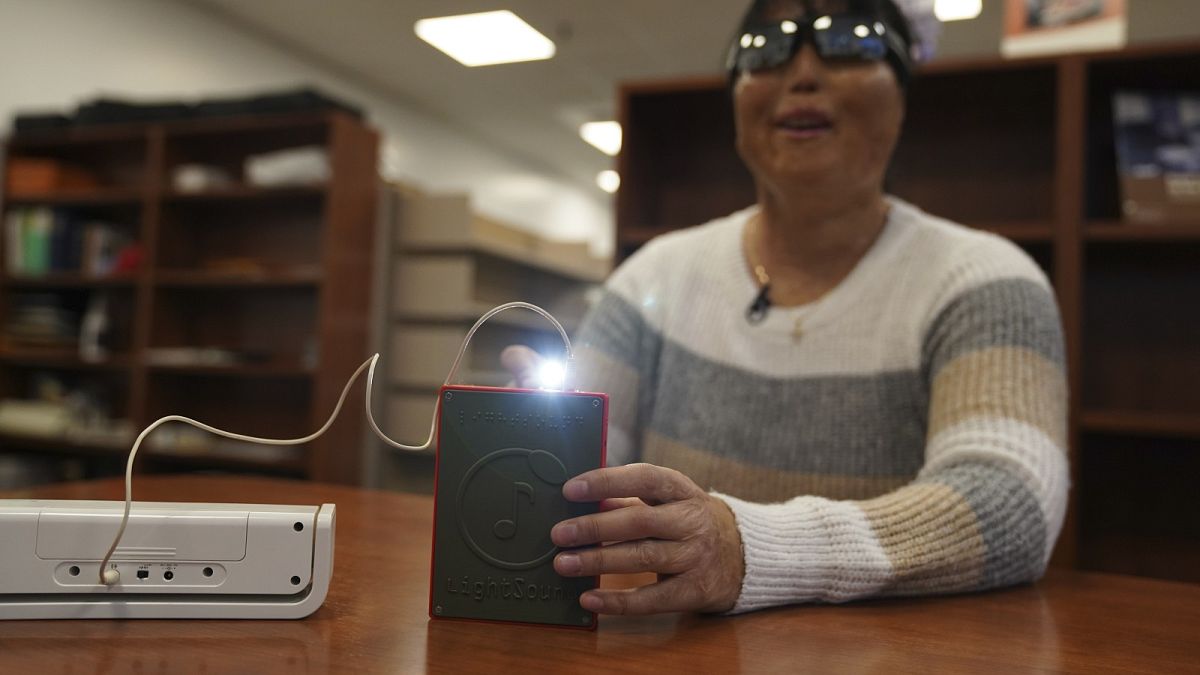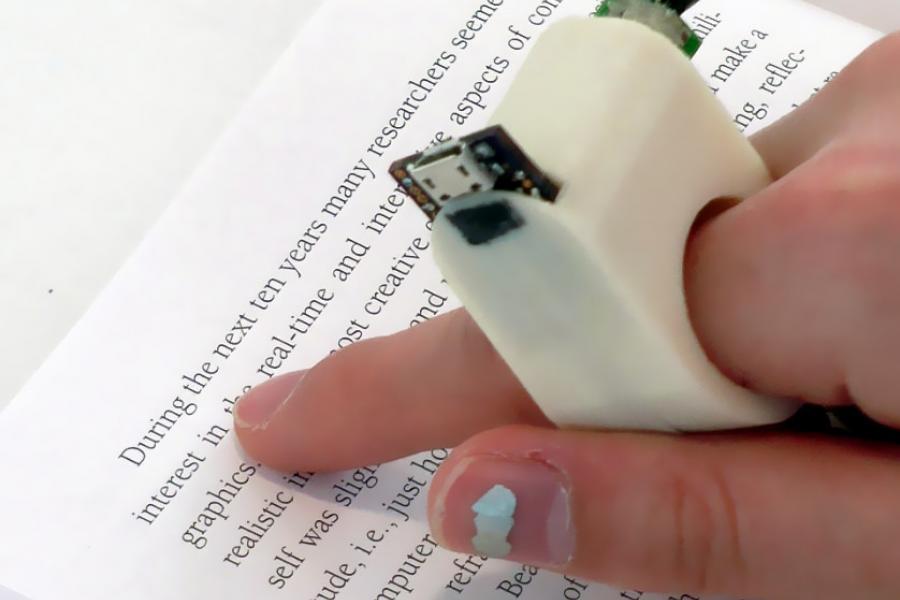Lightweight Technology for Low Vision: A Revolution in Accessibility
Lightweight Technology for Low Vision: A Revolution in Accessibility
Blog Article
Discover Ingenious Tools Developed for the Visually Damaged
The growth of ingenious devices for the aesthetically impaired stands for a significant improvement in accessibility and freedom. Technologies such as clever glasses with AI capacities and mobile applications developed to supply auditory summaries are improving daily experiences for customers.
Smart Glasses for Navigating

Smart glasses made for navigation are transforming the way aesthetically impaired individuals connect with their atmosphere. These sophisticated devices utilize a combination of electronic camera modern technology, expert system, and auditory responses to supply real-time info concerning surroundings. By using barrier detection systems, clever glasses can inform individuals to prospective hazards, enabling much safer flexibility in both unfamiliar and acquainted setups.
The integration of GPS innovation even more boosts navigation abilities, permitting users to get acoustic instructions as they relocate. This hands-free approach not only fosters freedom but likewise empowers aesthetically impaired people to navigate metropolitan landscapes with raised confidence. Additionally, several wise glasses are outfitted with features that determine landmarks and street signs, offering contextual info that improves the individual experience.
Moreover, the advancement of these tools is constantly progressing, with firms functioning to enhance the accuracy of things acknowledgment and expand the variety of navigational features. As smart glasses become more easily accessible and cost effective, they hold the potential to considerably transform day-to-day life for aesthetically damaged users. Inevitably, these cutting-edge devices stand for a vital step toward inclusivity, offering improved movement and a higher sense of autonomy for individuals browsing the globe around them.

Mobile Application for Daily Living
Just how can mobile applications enhance the everyday lives of visually impaired individuals? Mobile applications are revolutionizing the method aesthetically impaired customers browse their environments, manage daily tasks, and gain access to information. These applications offer necessary assistance with numerous capabilities, promoting independence and boosting lifestyle.
Several ingenious mobile apps are created specifically for day-to-day living. For example, applications like Be My Eyes link visually impaired users with sighted volunteers through video clip calls, permitting them to receive real-time support with tasks such as reading labels or browsing unfamiliar areas. Seeing AI, created by Microsoft, uses man-made intelligence to describe environments, reviewed text, and identify things, successfully transforming a mobile phone right into a powerful device for day-to-day help.
Additionally, navigation applications customized for the aesthetically damaged, such as Aira and BlindSquare, provide audio-based instructions and ecological information, enabling individuals to traverse their environments securely and with confidence. Past navigation and instant help, mobile applications likewise sustain company and job management, with functions that help individuals establish tips, develop to-do lists, and track visits. In summary, mobile applications act as essential sources, equipping aesthetically damaged people to lead even more independent and fulfilling lives.
Wearable Technologies for Assistance
Empowerment with modern technology is increasingly apparent in the realm of wearable gadgets made to aid visually damaged people. These cutting-edge devices integrate effortlessly into life, improving navigation and offering important responses to users. Smart glasses geared up with video cameras can read and identify faces message aloud, enabling individuals to connect even more confidently in expert and social setups.
One more notable advancement is using haptic responses systems in wearable tools. These systems utilize vibrations or various other responsive signals to communicate information concerning the user's environment, such as obstacles or changes in terrain, improving wheelchair and security. Wearable innovations also consist of wristbands that link to smartphones, informing individuals to notifications via subtle vibrations, thus boosting connectivity without reliance on aesthetic signs.
As these technologies proceed to develop, they are not just boosting freedom for visually impaired people however also promoting a higher feeling of addition in society. By bridging the void in between difficulties faced in day-to-day living and the possibility for autonomy, wearable technologies offer as essential tools in the pursuit for equal rights and empowerment for those with visual problems.
Sound Summary Devices
Audio description devices play a critical duty in improving ease of access for aesthetically damaged people, offering them with the capacity to engage with aesthetic media. Speech-to-text devices for low vision. These devices offer narrated summaries of key aesthetic elements in films, tv shows, and live efficiencies, ensuring that individuals can fully comprehend the context and emotions conveyed with visuals
Sound description can be integrated into different systems, consisting of streaming solutions, movie theater screenings, and live movie theater. Several popular streaming solutions currently consist of audio description as an access function, permitting visitors to select it easily. Along with mainstream media, specialized apps additionally exist, giving audio summaries for art exhibits, galleries, and various other cultural occasions.
The performance of same day glasses audio summary rests on the skill of the storytellers, that should share visual details succinctly without diminishing the original audio. Developments in this field are additionally leading the way for more personalized experiences, where users can adjust the degree of detail and pacing according to their preferences.
Braille Innovations and Tools
Braille gadgets and advancements have considerably transformed the method aesthetically damaged individuals connect with message and details. Modern improvements have led to the development of versatile tools that enhance literacy and freedom amongst individuals.
Furthermore, portable Braille notetakers integrate conventional Braille input with contemporary capabilities, promoting note-taking, organizing, and file editing and enhancing on the go. Mobility aids for visually impaired users. These portable tools often include text-to-speech abilities, bridging the void between Braille and acoustic information
In enhancement, innovative Braille printers have arised, allowing reference customers to generate Braille labels, documents, and instructional materials effectively. This ease of access fosters better engagement in academic and expert environments, inevitably advertising inclusivity.
Additionally, study right into smart Braille modern technologies remains to expand. Instruments that integrate artificial knowledge are being explored to supply real-time navigating help and contextual information, boosting the customer experience in diverse setups. In general, these developments mirror a dedication to empowering aesthetically damaged individuals with modern technology, guaranteeing they can easily accessibility and engage with the globe around them.

Verdict
The advancement of cutting-edge devices for the aesthetically damaged considerably enhances self-reliance and lifestyle. Smart glasses, mobile applications, wearable technologies, audio description tools, and Braille innovations jointly equip individuals by giving crucial navigation aid, environmental recognition, and enhanced reading experiences. These innovations not only foster higher inclusion yet additionally advertise autonomy in day-to-day activities, inevitably contributing to a much more fair and easily my company accessible society for aesthetically damaged individuals. Proceeded development in this field holds pledge for further improvements.
As wise glasses become much more available and inexpensive, they hold the possible to significantly transform everyday life for visually impaired customers. Mobile apps are transforming the method aesthetically damaged customers navigate their environments, handle everyday jobs, and accessibility details. Applications like Be My Eyes connect visually impaired individuals with sighted volunteers by means of video clip phone calls, allowing them to receive real-time support with tasks such as checking out labels or navigating unknown areas.In addition, navigation apps tailored for the aesthetically damaged, such as Aira and BlindSquare, supply audio-based instructions and ecological information, enabling users to traverse their environments securely and with confidence.The improvement of ingenious tools for the visually impaired dramatically improves self-reliance and high quality of life.
Report this page